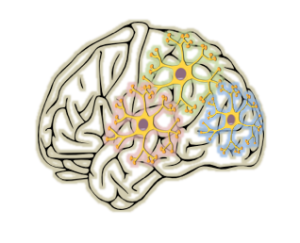Causes of Reading and Spelling Problems
Written by Jennifer Salisbury
Published on April 14, 2015
What can neuroscience tell us about dyslexia and other language-processing difficulties? How do differences in the brain’s wiring help explain the best approach to helping struggling readers, writers, and spellers? This article answers those questions and more.
How Brains Develop for Average Children
- First three years of formal schooling– During this time, the brain is rapidly firing, wiring, and interconnecting its literacy centers, especially on the left side of the brain–the area responsible for language, including speech sounds, letter symbols, reading, and writing.
- By the 4th grade– By this time, the brains of most children who have had reading and writing instruction have formed strong interconnections (called neural networks) for reading and writing. For normal readers, these networks generally run in the “background” without much conscious effort, freeing the brain for other cognitive functions.
 Brain Wiring in Children with Language Processing Differences
Brain Wiring in Children with Language Processing Differences
Nearly 30% of children have differences in brain wiring associated with language-based learning disabilities. For example, studies show that, compared to average readers, children with dyslexia tend to have more activity on the right side of the brain when they are reading. This can mean inefficient, slower processing, and inefficient and slower reading and writing.*
Neuroscience Finds Two Main Reading and Writing Disorder Patterns
- Dyslexia is the most common cause of reading and writing problems. Dyslexic children have weaknesses in reading, spelling, and/or writing but at least average listening comprehension.
- Specific Language Impairment, in contrast, may include difficulties in reading, spelling, or writing but also includes weaknesses in listening comprehension.
Effective Treatment and Support
Structured Literacy and Mind’s Eye
The methods used to treat dyslexia and specific language impairment are different so in the first session we use language processing assessments to identify the underlying problems and patterns. Once we understand the cause(s) of your child’s learning difficulties we customize treatment to meet their learning needs. Our clinical educators can also give recommendations for the accommodations and assistive technologies that are most appropriate for your child.
- Structured Literacy (aka, Orton-Gillingham), a method that has been used for over 70 years, has a deep research base as the most validated approach for helping children and adults with language processing differences such as dyslexia. Upper-level reading, writing, and spelling concepts are mastered through explicit, systematic, and multisensory instruction. At Lexercise, highly qualified clinicians administer The Lexercise Structured Literacy Curriculum™ online through live, 1-on-1, interactive video sessions.
- The “Mind’s Eye” Approach is a method that has been used since the times of the great Greek and Roman orators. It is designed for children with specific language impairments and teaches structured visualization to help improve comprehension and expression. Lexercise teletherapists use The Lexercise Mind’s Eye Curriculum™ to help students strengthen weak listening and reading comprehension.
 There are many published curricula that are based, to varying degrees, on structured literacy models, but a curriculum or “program” is of limited use without a practitioner who has the knowledge and skill to adjust it to the needs of individual children. Although schools are well-intentioned, they often invest more in boxed “programs” than on the professional development that has been shown to be essential for effective implementation. For that reason–and many others–we strongly recommend parents seek individualized, professional assistance from qualified practitioners, rather than “waiting and hoping” for a solution from schools.
There are many published curricula that are based, to varying degrees, on structured literacy models, but a curriculum or “program” is of limited use without a practitioner who has the knowledge and skill to adjust it to the needs of individual children. Although schools are well-intentioned, they often invest more in boxed “programs” than on the professional development that has been shown to be essential for effective implementation. For that reason–and many others–we strongly recommend parents seek individualized, professional assistance from qualified practitioners, rather than “waiting and hoping” for a solution from schools.
If your child is a struggling reader, speller, or writer consider working with one of our literacy experts to get your child where he/she should be in just a few months. See this video for more information.
* Note: approximately 5% of the population experiences delays with reading caused by significant development delays caused by more global intellectual functioning delays, not dyslexia or language-based learning disabilities.
Sandie Barrie Blackley, MA/CCC and Lexercise Chief Knowledge Officer, also contributed to this article. Learn more about Sandie’s background here.
4 Responses to Causes of Reading and Spelling Problems
-
-
I have contacted you before about a ten-year old that I am working with. He is below grade level in reading and his writing level is below grade level as well. He has cerebral palsy. From what I’ve been told, he does well in math and other subjects and I have found him to be very intelligent. I have not been able to pinpoint his problem in reading. The school does not believe he is dyslexic but I have no other explanation for his problem. This program could be a benefit for him. However, his family is unable to pay for it and the price is way above my means. Are scholarships available for your program? Please e-mail me as I am not always available for telephone calls. Thank you for your time. Ann Jay
Leave a comment
Improve Your Child’s Reading
Learn more about Lexercise today.
Schedule a FREE
15-minute consultation


I would like to know more about your program and cost and see if it will help my child,see going into the 9th and ages been tested several times also have been on a program, doing a little better but still struggles with comprehension and spelling..please help me out